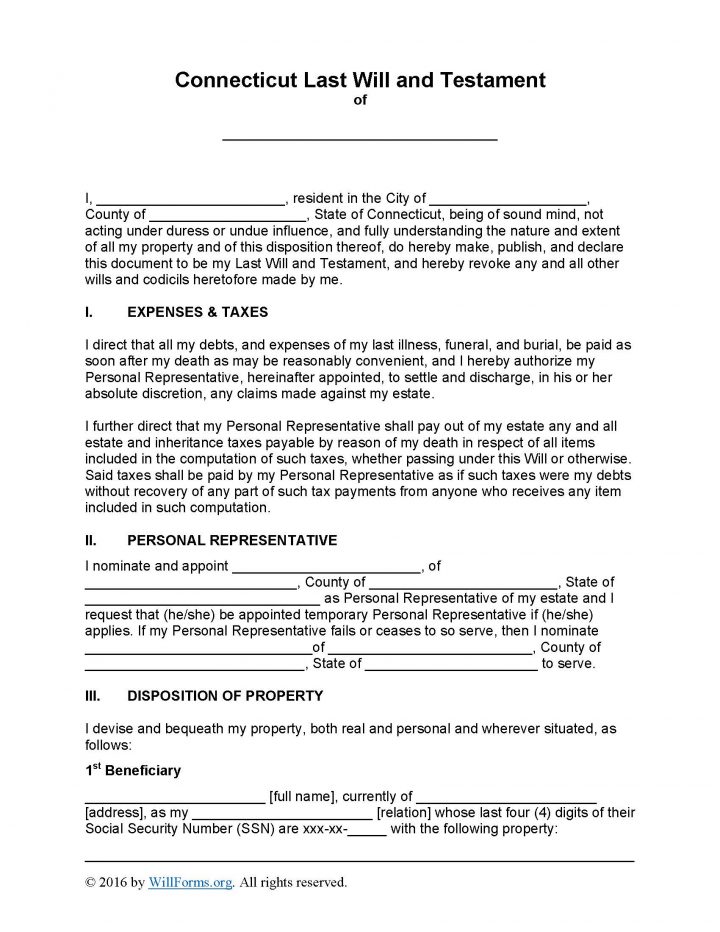
|
Connecticut Last Will and Testament Form |
The Connecticut last will and testament form is legal a document that is provided so that a Testator may state in writing how they wish to have their estate (real property and personal property) distributed after their death, The document will offer direction to an executor/personal representative, to oversee the proper distribution of the estate according to the wishes of the Principal. The document, upon completion, must be witnessed before two witnesses and may be revoked or changed at any time, should the Principal decide to do so.
Laws – § 45a-233
How to Write
Step 1 – Download the document and establish the document by entering the Testator’s name into the first line of the document
- The Testator may begin by entering::
- The testator’s name
- City of residence
- County
- Read the remaining portion of the paragraph
- Read and agree to the titled section “Expenses and Taxes”
Step 2 – Personal Representative – The Testator may appoint their executor by providing the following information”
- Line 1 – Submit the name of the appointed executor
- Address
- County
- State of residence
Should the testator choose to appoint an alternate executor submit:
- The Alternate exector’s name
- Alternate’s physical address
- County
- State
Step 3 – Disposition of Property – In this section the testator may enter their selected beneficiaries and bequeathed property. If there are more than three (3) beneficiaries, add the same information on a separate sheet and attach it to the document:
- Full name of eachbeneficiary
- Beneficiariy’s current address
- Relationship
- Last four (4) digits of the beneficiary’s Social Security Number (SSN)
- The Principal must read review and agree to the next two paragraphs. Should the testator have additional for the executor add them on a separate sheet,
Step 4 – Titled Sections and all Subsections- The Testator must carefully read the following titles and subtitles:
- Omissions
- Bond
- Discretionary Powers of Personal Representative (subsections A – K)
- Contesting Beneficiary
- Guardian Ad Litem Not Required
- Gender
- Assignment
- Governing Law
Step 5 – Binding Agreement – The Principal must review the first paragraph then submit the following in the second paragraph:
- Enter testator’s name
- Enter a date of exectution of the document- dd/m/yy
- Testator’s name
- Printed name
- Date the signature in dd/m/yy format
- Submit the Testator’s name
Step 6 – Witness Signatures and Notary Public –Testator and witnesses must be present before a notary public for signature –
Witnesses –
- Both Witnesses must enter their signatures
- Complete current addresses
Testamentary Affidavit –
- A notary must acknowledge this document after completion, all parties must be present to sign this document in the presence of one another
- The notary will enter the names of the parties
- Provide the signature of the Testator
- Provide the signatures of the witnesses

